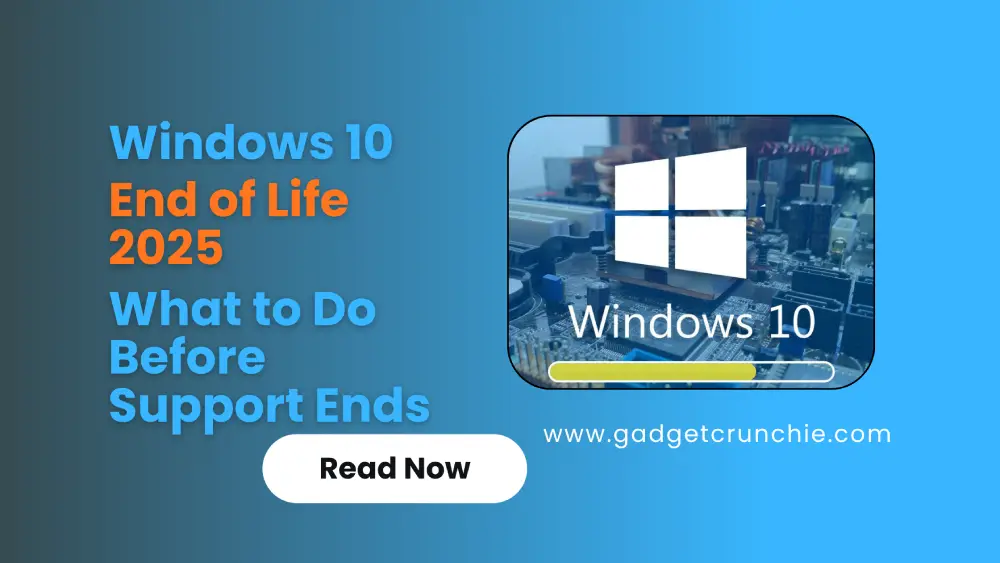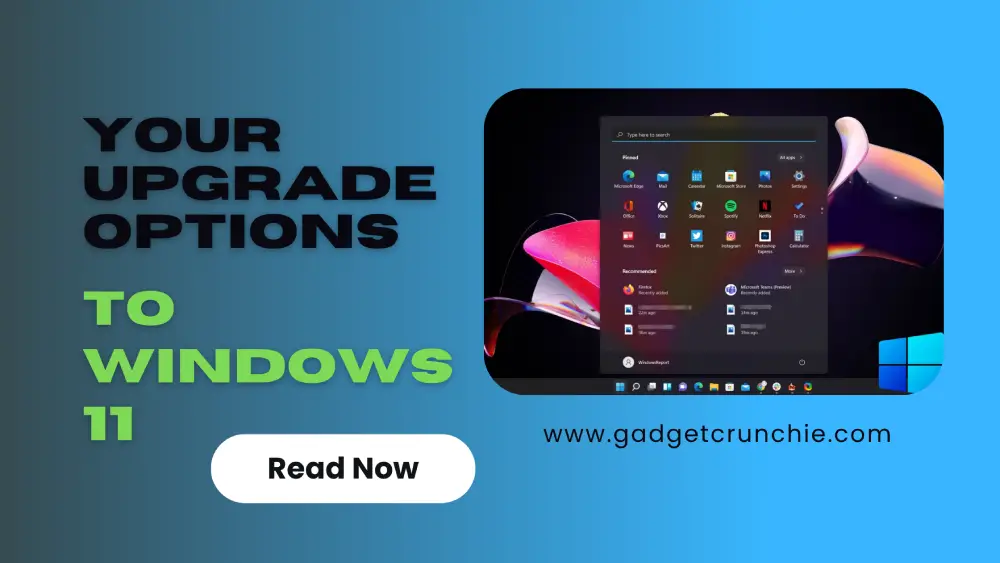Windows 10 End of Life 2025 – What to Do Before Support Ends

If you’re one of the millions still running Windows 10, there’s an important date you need to mark on your calendar: October 14, 2025. This is the official date for the Windows 10 end of life. After this day, Microsoft will officially end all support for the operating system that has powered our PCs for nearly a decade.
But what does this actually mean for you? Should you panic? Is your computer going to stop working?
In this guide, we’ll break down everything you need to know about the Windows 10 lifecycle, what happens when support ends, and the clear steps you can take to stay secure and productive.
What Is Windows 10 End of Life?
In simple terms, “End of Life” (EOL) is a software manufacturer’s way of saying, “This product has reached the end of its useful life, and we will no longer support it.” For Microsoft, this is a standard part of its product Windows 10 lifecycle.
Once a product like Windows 10 hits its EOL date, Microsoft will no longer provide:
- Security updates or patches
- Technical support (free or paid)
- Bug fixes or stability improvements
Think of it like a car manufacturer stopping the production of parts for an old model. You can still drive it, but finding repairs and keeping it safe becomes increasingly difficult and risky over time.
Official Windows 10 End of Life Date and Versions Affected
The final, official Windows 10 end of life date is October 14, 2025. This is the deadline for all mainstream versions of the operating system.
Which Versions of Windows 10 Are Affected?
Almost every consumer and business edition of Windows 10 will reach the end of support on this date. This includes popular versions like:
You might be wondering about specific versions you’ve heard of, like the Windows 10 20H2 end of life. The key thing to understand is that all these semi-annual channel versions have already reached, or will reach, their own individual end-of-service dates before the final 2025 deadline. The October 2025 date is the final curtain call for the entire Windows 10 product line (with one exception, which we’ll cover below).
While Windows users prepare for the 2025 update changes, iPhone owners can read our iOS 26 Review (2025) to explore what’s coming to Apple devices this year.
The Exception: What About Windows 10 LTSC End of Life?
There is one important exception to the 2025 deadline: the Long-Term Servicing Channel (LTSC).
Windows 10 LTSC is a specialized version designed for critical systems that cannot tolerate frequent changes, such as medical equipment, industrial control systems, or point-of-sale terminals. These versions have a much longer support lifecycle.
So, when is the Windows 10 LTSC end of life? The current versions, Windows 10 Enterprise LTSC 2019 and 2021, have support end dates in January 2029 and January 2027, respectively. However, it’s crucial to note that LTSC is not intended for general consumers or most businesses due to its lack of feature updates and exclusion of many modern apps like the Microsoft Store.
What Happens When Microsoft Ends Windows 10 Updates
So, what happens after Windows 10 end of life if you choose to keep using it? The risks are significant and should not be taken lightly.
Continuing to use an unsupported operating system is like leaving the front door of your house unlocked in a busy neighborhood. Over time, using an unsupported version may lead to performance or security problems.
Microsoft Ending Support for Windows 10: Why It Matters
The phrase “Microsoft ending support for Windows 10” might sound like corporate jargon, but its impact is very real for every user. This decision is a critical part of the technology adoption cycle. By focusing its resources on Windows 11 and future innovations, Microsoft can deliver better performance, stronger security architectures, and more modern features.
For you, the user, this transition matters because:
“The end of Windows 10 marks a turning point”
Want a step-by-step walkthrough? Watch my complete video tutorial on Gadget Crunchie
Your Upgrade Options After Windows 10 EOL

You have a few clear paths forward. The most straightforward and recommended option for most users is to upgrade to Windows 11 after Windows 10 EOL.
Option 1: Upgrade to Windows 11
This is the natural successor to Windows 10, and for most people with compatible hardware, it’s a smooth transition.
Can Your PC Run Windows 11?
The main hurdle for many is the stricter hardware requirements. Your PC must meet the following key criteria:
To verify, open Settings → Update & Security → Windows Update, and see if the Windows 11 upgrade option appears. You can also use Microsoft’s PC Health Check tool to confirm.
Benefits of Upgrading:
Option 2: Consider Windows 10 LTSC (For Specific Use Cases)
As mentioned earlier, Windows 10 LTSC end-of-life dates are further out. However, this is not a solution for everyone.
Who should consider Windows 10 LTSC?
For the average home user, student, or standard office worker, LTSC is not recommended. It lacks the latest features and can be more difficult to acquire and manage.
Option 3: Purchase a New Computer
If your current device is old and doesn’t meet Windows 11’s requirements, the most practical solution is to invest in a new PC. New hardware is designed to take full advantage of Windows 11’s security and performance features and will provide a much better overall experience.
Windows 10 Update Support Ending 2025: Your Action Plan
With Windows 10 update support ending in 2025, the time to plan is now. Don’t wait until the last minute. Follow this simple checklist:
- Check Compatibility: Use Microsoft’s PC Health Check tool to see if your current PC can run Windows 11.
- Back Up Your Data: Before making any major changes, ensure all your important files are backed up to an external drive or a cloud service.
- Explore Windows 11: If your PC is compatible, take the plunge. You can often upgrade for free, keeping your files and apps intact.
- Budget for New Hardware: If your PC isn’t compatible, start planning and budgeting for a new computer. The 2025 deadline gives you plenty of time to shop for deals.
- Consult Your IT Department (For Businesses): If you’re in a business environment, talk to your IT manager about the company’s upgrade strategy to Windows 11 or a cloud-based solution like Windows 365.
Conclusion: Prepare for the Change Now
The Windows 10 EOL in 2025 is a significant milestone, but it doesn’t have to be a stressful one. It’s a planned event that gives you a clear opportunity to modernize your computing experience and, most importantly, protect your digital security.
The key takeaway is simple: after October 14, 2025, continuing to use Windows 10 will become a security gamble. The safest and most logical path for the vast majority of users is to upgrade to Windows 11.
Don’t wait for the final countdown. Assess your options today and prepare for the change now to stay secure and updated.
